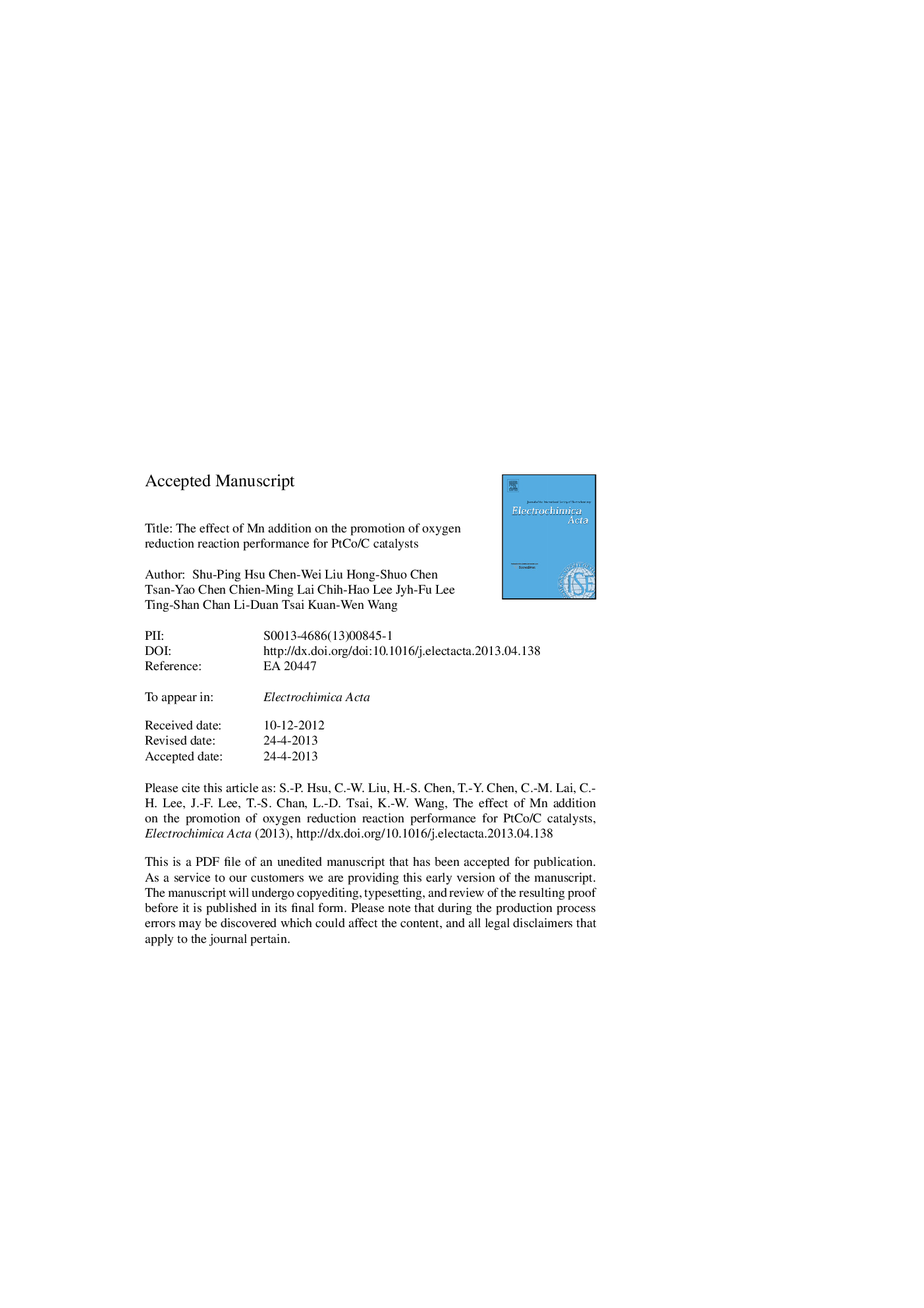| Article ID | Journal | Published Year | Pages | File Type |
|---|---|---|---|---|
| 6617423 | Electrochimica Acta | 2013 | 34 Pages |
Abstract
For PtCo/C catalysts modified with 0.4 and 3.2Â wt% of Mn, the Pt/Co atomic ratio is 3.5 and the size is about 3.0Â nm with the same face centered cubic (fcc) structure. Moreover, Mn-modified PtCo/C catalysts have the same surface composition, which is about Pt/Co/Mn of 62/32/6, and their ORR activity are both higher than that of PtCo/C and commercial Pt/C catalysts. After accelerated durability test (ADT) of 1700 cycles, Mn-2 with 3.2Â wt% Mn addition still presents the best ORR mass activity, which is about 420% of commercial Pt/C. In the Mn-modified PtCo/C system, due to the existence of the neighboring Co and/or Mn oxide, there is OH repulsion between Pt-OH and these non-noble metal hydroxides or oxides, decreasing the OH coverage on Pt and increasing the number of free Pt active sites. Besides, based on the XAS analysis, the unfilled d-orbital values and extent of hybridization of Pt and Co/Mn of the PtCo and Mn-modified samples are very similar. Therefore, the promotional effect on ORR performance of Mn-2 is attributed to the most enhanced Pt-skin structure, highest Pt usage, and comparable electron transfer number during ORR instead of changes in d-orbital vacancy and alloying degree.
Keywords
Related Topics
Physical Sciences and Engineering
Chemical Engineering
Chemical Engineering (General)
Authors
Shu-Ping Hsu, Chen-Wei Liu, Hong-Shuo Chen, Tsan-Yao Chen, Chien-Ming Lai, Chih-Hao Lee, Jyh-Fu Lee, Ting-Shan Chan, Li-Duan Tsai, Kuan-Wen Wang,
